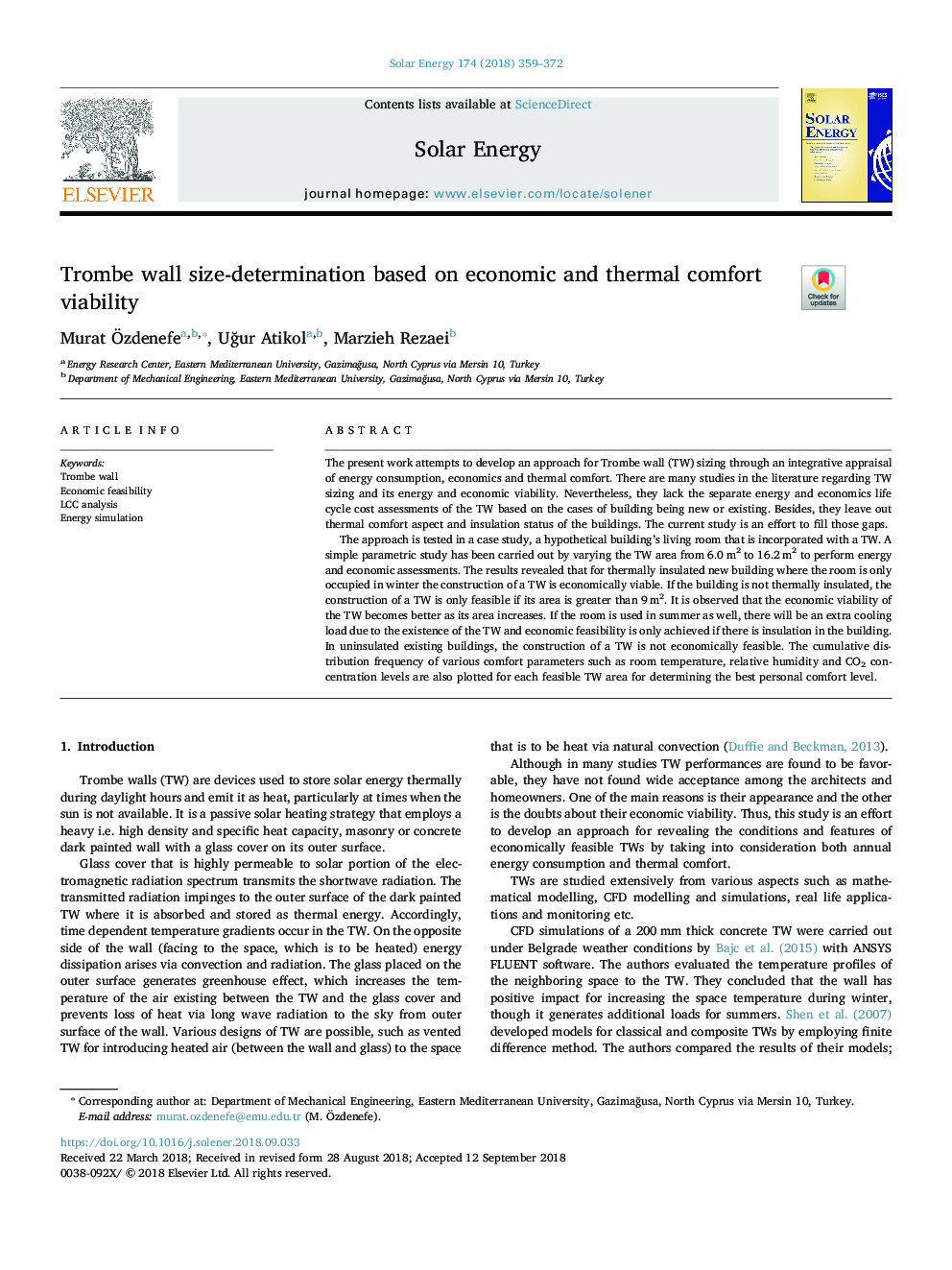| Article ID | Journal | Published Year | Pages | File Type |
|---|---|---|---|---|
| 10141973 | Solar Energy | 2018 | 14 Pages |
Abstract
The approach is tested in a case study, a hypothetical building's living room that is incorporated with a TW. A simple parametric study has been carried out by varying the TW area from 6.0â¯m2 to 16.2â¯m2 to perform energy and economic assessments. The results revealed that for thermally insulated new building where the room is only occupied in winter the construction of a TW is economically viable. If the building is not thermally insulated, the construction of a TW is only feasible if its area is greater than 9â¯m2. It is observed that the economic viability of the TW becomes better as its area increases. If the room is used in summer as well, there will be an extra cooling load due to the existence of the TW and economic feasibility is only achieved if there is insulation in the building. In uninsulated existing buildings, the construction of a TW is not economically feasible. The cumulative distribution frequency of various comfort parameters such as room temperature, relative humidity and CO2 concentration levels are also plotted for each feasible TW area for determining the best personal comfort level.
Related Topics
Physical Sciences and Engineering
Energy
Renewable Energy, Sustainability and the Environment
Authors
Murat Ãzdenefe, UÄur Atikol, Marzieh Rezaei,
